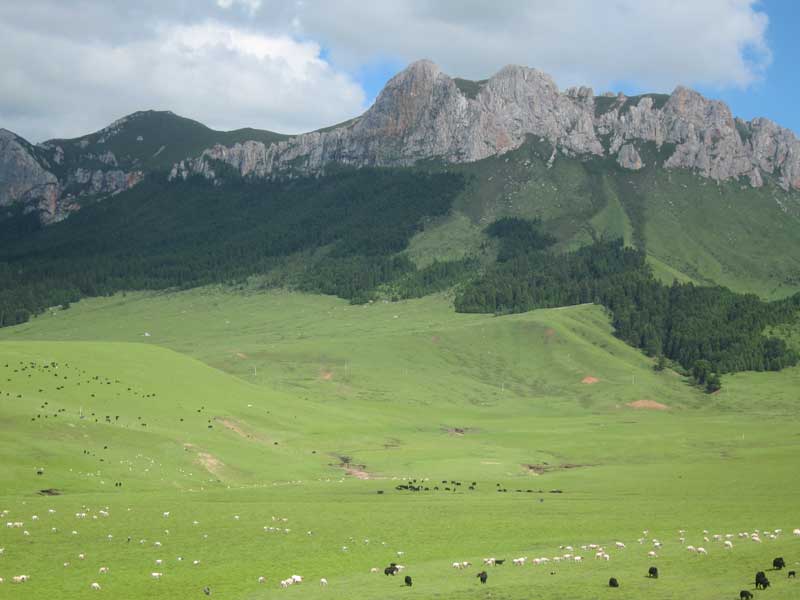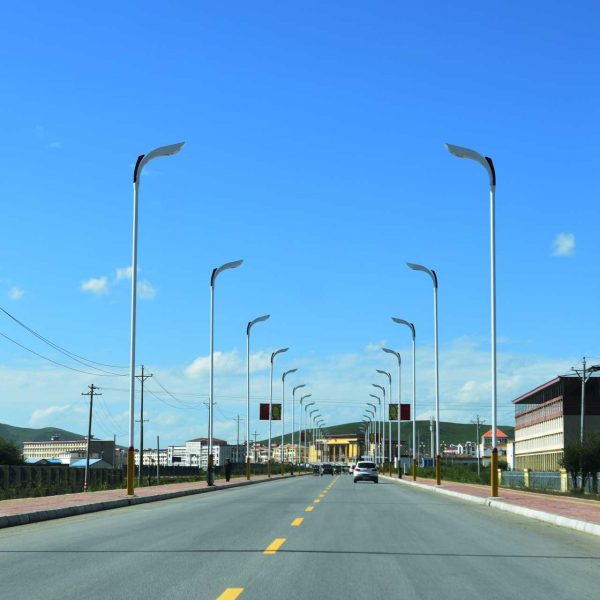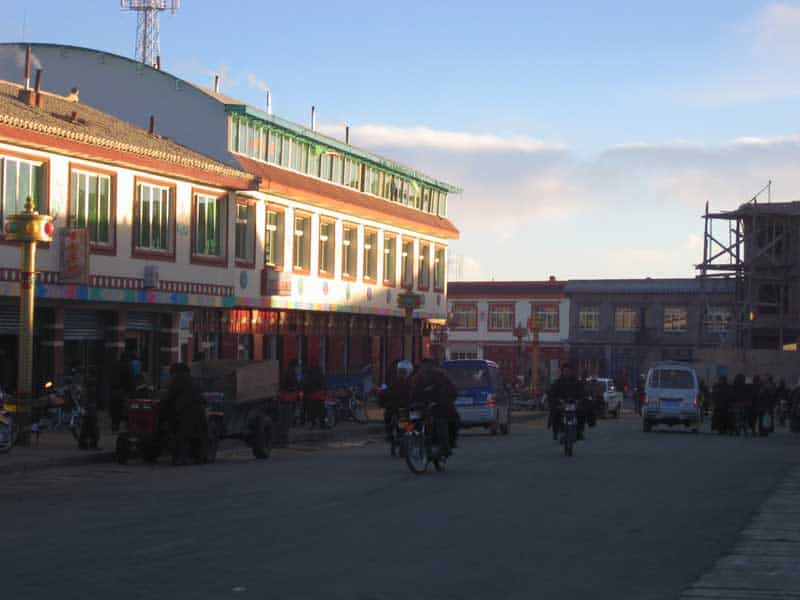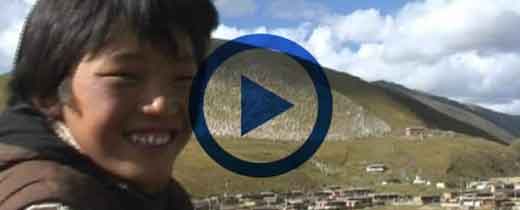Zoige County, also known as “Dzoge County” in Tibetan OR “Ruoergai County” in Chinese Pinyin, is a county under Aba Tibetan Qiang Autonomous Prefecture
Zoige County is the northern gateway from Sichuan Province to Gansu Province and Qinghai Province. It is also the “intersection” of Sino-Tibetan culture in “Northwest Sichuan”. It is regarded as the “ethnic corridor” connecting three provinces of Sichuan, Gansu and Qinghai.
Among the 6 most beautiful wetlands selected by “China National Geographic” in 2005, Zoige County wetlands ranks first
Location
Zoige County is located on northeastern edge of Qinghai-Tibet Plateau, in the northwest of Sichuan Province and north of Aba Tibetan Qiang Autonomous Prefecture.
Taktsa town, the county seat of Zoige County, is 3,406 meters above sea level, 475 kilometers away from Lanzhou, 469 kilometers away from Chengdu, and 322 kilometers away from Barkham
The southeast, due south and southwest of Zoige County are connected with Jiuzhaigou County, Songpan County, Hongyuan County and Aba County, and to its west, north and east are Maqu County, Luchu County, Zhuoni County and Diebu County of Gannan Tibetan Autonomous Prefecture in Gansu Province.



Best time to travel
From June to October
Local climate
Plateau cold temperate zone humid monsoon climate
Most popular sites
Zoige pasture, located in northwestern Sichuan grassland in the junction Sichuan, Gansu, and Qinghai. It is one of the five large grasslands in China, covering an area of more than 35,600 square kilometers. It is a Tibetan settlement dominated by animal husbandry.
The first bay of Yellow River is located in front of in Tangke Township. It is 68 kilometers away from Zoige County, 8 kilometers away from Tangke Township, and 248 kilometers away from Jiuzhaigou county. Yellow River originates from Bayankala Mountain in Qinghai and flows slowly eastward to Sichuan province
Taktsa monastery, also known as “Zoige Gonsar Ganden Rabgyeling“, is listed as a national cultural relics protection units. It is a Gelug pa monastery with location in northeast of Taktsa township. Its architecture has both traditional Tibetan architectural style and Han architectural style, of which are combined into one. Taktsa monastery was first built in 1663 AD, and moved to its current location in 1829 AD, greatly expanded;
There are many ceremonies and pujia being held in this monastery, and the most popular ones are “Monlam Festival” in the 1st first month; “Niangne Pujia” in the 4th month; Debating Pujia in 7th; “Lantern Festival” in 10th month; and “Banish Evile” & “Dharma King Dance Pujia” in the 12th month
Geography and climate
Zoige County is the largest county in Aba Tibetan Qiang Autonomous Prefecture, with an area of 10,620 square kilometers; The watershed between Yellow River Basin and Yangtze River Basin divides Zoige County into two distinct geographical units and natural economic zones.
The central, western and southern regions are typical hilly plateaus, accounting for 69% of the county’s total area, and terrain slopes from south to north with average altitude of 3,500 meters.
Mountains in north and southeast belong to the end of Dieshan Mountains in west of the Qinling Mountains and northern end of Minshan Mountains. The mountains are high, valleys are deep, with an altitude of 2,400 to 4,200 meters.
There is no summer in Zoige County, annual average temperature is 1.1℃, and annual absolute minimum temperature is -33.7℃. Annual precipitation is 656 mm, and rainfall is mostly concentrated from late May to mid-July, with an average annual relative humidity of 69%
There is no absolute frost-free period. Every year, the land begins to freeze in late September, and it is completely thawed in mid-May, with the frozen soil reaching a maximum depth of 72 cm.
Population and ethnicity
As of 2019, Zoige County has a total population of 82,000, of which the Tibetan population is 72,000, accounting for 92%. Other ethnic groups include 12 ethnic groups including Han, Hui, Qiang, and Yi,…etc
How to get to Zoige
The quickest way to get to Zoige county is by flight, or the most convenient way is to take but to Zoige county
Hongyuan Airport
Add: 48 kilometers from Hongyuan
Contact: +86 837 7735566
Airport code: AHJ
Altitude: 3,535 meter
Jiuzhai Huanglong Airport
Address: Songpan county
Contact: +86 837 7243770
Airport Code: JZH
Altitude: 3,448 meter
Zoige Bus Station
Add: No.26, Shuguang Road, Taktsa town
Contact: +86 837 2298395
Altitude: 3,400 meter
Chengdu Cha Dian Zi Bus Station
Add: No. 289, 3rd Ring Road (West Section 5th)
Contact: +86 28 87506610
Altitude: 460 meter
Chengdu to Zoige One bus to Zoige with departure at 06:30 am every day. One additinal departure at 07:00 am in July and August, the ride takes 9 hours, with rate of 200RMB per ticket
Zoige to Chengdu Two buses at 07:05 am, 07:30 am every day, the ride takes 9 hours, with rate of 200 RMB per ticket
Songpan to Zoige Two buses at 10:00 am, 14:30 pm every day, the ride takes 3 hours, with rate of 48 RMB per ticket
Zoige to Barkham One bus at 06:30 am in summer; 07:00 am in winter, the ride takes 6 hours, with rate of 80 RMB per ticket
Zoige to Aba county One bus at 08:00 am every day; the ride takes 6 hours, with rate of 80 RMB per ticket
Zoige to Langmusi One bus at 07:00 am, the bus shall stop at the Langmusi stop around 09:00 am. At 14:30 pm, there is a direct bus to Langmusi departing from Zoige. It takes 2 hours with rate of 22 RMB per ticket
Langmusi to Zoige one bus at 07:00 am in summer and 07:30 am in winter. It takes 2 hours with rate of 22 RMB per ticket
Zoige to Tangke Township One bus at 15:00 pm in summer OR 14:30 pm in winter. It takes 1.5 hours with rate of 23 RMB per ticket
Tangke Township to Zoige It is a stop of Tangke of the bus departing from Xiaman to Zoige, arriving in Tangke bus stop around 10:00 am. It takes 1.5 hours ith rate of 22 RMB per ticket
Chartered vehicle to view spots
There are many scenic spots in Zoige that are not reachable by bus, and chartered vehicle is the most convenient way to travel. On the street garden next to the county center and the road intersection square next to Fanzhou hotel, you will find many minivans, which can be used to go to the scenic spots
Chartered vehcile to Hongyuan one-way for about 350 RMB
Chartered vehcile to Songpan one way about 350-380 RMB
Chartered vehcile to The Yellow River Jiuqu First Bay round-trip 150 RMB,
Chartered vehcile to Langmusi is about 250RMB.
Be advised: The above listed prices are just updated in 2019 April. Those are for reference, and prices can be affected by the travel season, the individual bargaining power
Distance from Zoige to scenic spots
Zoige to Tangke Township 64km – Yellow River Jiuqu First Bay 8km
Zoige to Huahu (Flower) lake 45km – Hongxing Township 33km – Langmusi 12km
Zoige to Jiangzha Hot Spring 95.5km
Zoige to Baxi Conference Site 33km – Qiji Township 18km
Zoige to Baozuo Township 85km – Dajin Temple (the seat of Baozuo Battle) 4km
Zoige to Hongxing county 78km – 12km from Jiangzha Township – 30km from Diebu Sika Deer Conservation Area.
Brief History
During Western Han Dynasty, Zoige area belonged to Baima area.
During Northern Zhou Dynasty, part of Zoige area belonged to Rongxiang County of Caozhou.
In Sui Dynasty, part of Zoige area belonged to Wenshan County,
In Tang Dynasty, Zoige area was under jurisdiction of Songzhou, which was ruled by Tubo kingdom
In Yuan Dynasty, Panzhou was established in Zoige area
In Ming Dynasty, Panzhou and Songzhou were merged and named Songpan Wei from the initials of the two counties
In Qing Dynasty, Zoige Chieftain Department was set up in Taktsha town
During Republic of China, Zoige area was under jurisdiction of Songpan County (formerly known as “Songpan Wei”)
In 1956, Zoige County was established, which was under jurisdiction of Aba Tibetan and Qiang Autonomous Prefecture.




